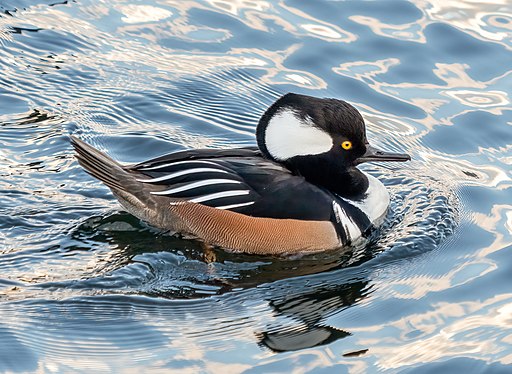Hooded Merganser
Lophodytes cucullatus
Written by Kathy Richards
HABITAT:
As forests were cleared in the 1800s and beaver were extirpated the merganser numbers dropped dramatically. Their numbers have since rebounded due to the return or beavers, forests and the introduction of nest boxes.
Their habitat covers much of the United States. They prefer inland freshwater wetlands which include forested edges of small lakes, ponds and streams as well as reservoirs and emergent marshes especially with sandy gravelly bottoms. The merganser is most common in water that is less than 24 inches deep.
BEHAVIOR:
They will roost on logs, rocks and bare sandbars.
The saw tooth edges of its long, narrow beak make it an excellent fishing bird. It will catch fish by diving and finding the fish underwater by sight. The merganser has nictating membranes which are a see-through eyelid that act as goggles.
They will actively avoid humans.
After breeding the male molts making him flightless until the new flight feathers grow in.
Mergansers will croak when alarmed.
NESTING:
The merganser nests in tree cavities often created by pileated woodpeckers or in nest boxes that are 10-50 feet off the ground. Nests are usually near water. They lay 8-12 eggs in one day. The nest is made up of grasses, twigs and leaves. The female then lines the nest with straw and down plucked from her breast. One day after hatching the female will call the ducklings to jump out of the nest. They will plummet onto the forest floor then the mother carries them to the water. The young can find their own food right away and will ride on the mothers back in the water.
FOOD:
Fish, crayfish, crustaceans, aquatic insects and occasionally plants. Young ducklings feed primarily on insects.
PREDATOR:
People (primarily hunters)

